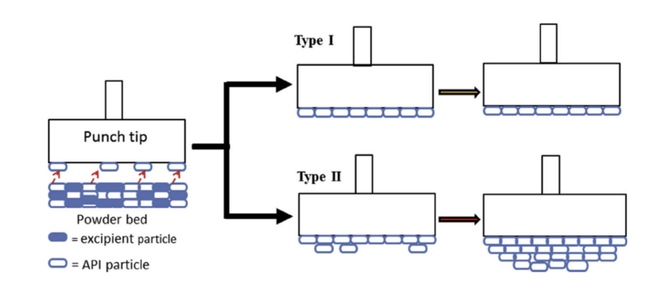Purpose To investigate how excipient matrix affects punch sticking propensity of active pharmaceutical ingredients (API), with the focus on the effect of bonding interactions between API-API (F2) and API-excipient (F3).
Method Sticking kinetics of direct compression formulations, consisting of 20% of celecoxib (CEL) or ibuprofen (IBN) indifferent excipient matrices, i. e., microcrystalline cellulose (Avice l PH102 and Avicel PH105 dry coated with nano-sized silica (PH105(n)), hypromellose (K15 M), and a 3:1 mixture between starch and Avicel PH102 (S3P1), was assessed using a removable punch tip on a compaction simulator. The amount of material transferred to punch was determined gravimetrically every 10 compressions up to 50 compactions.
Results CEL exhibited higher F2 than IBN. CEL also exhibited more sticking under otherwise identical compaction conditions in the same excipient matrix. Among different excipient matrices, sticking propensity of both APIs followed the ascending order: PH105(n) < PH102 < K15 M < S3P1. This order was exactly opposite to the order of F3, confirming that greater bonding strength of the formulation favors lower sticking propensity of a given API.
Conclusion For an API prone to punch sticking, judicious use of excipients to render higher tablet mechanical strength can mitigate severity of punch sticking.
Pharm Res (2018) 35: 113 - https://doi.org/10.1007/s11095-018-2396-3

